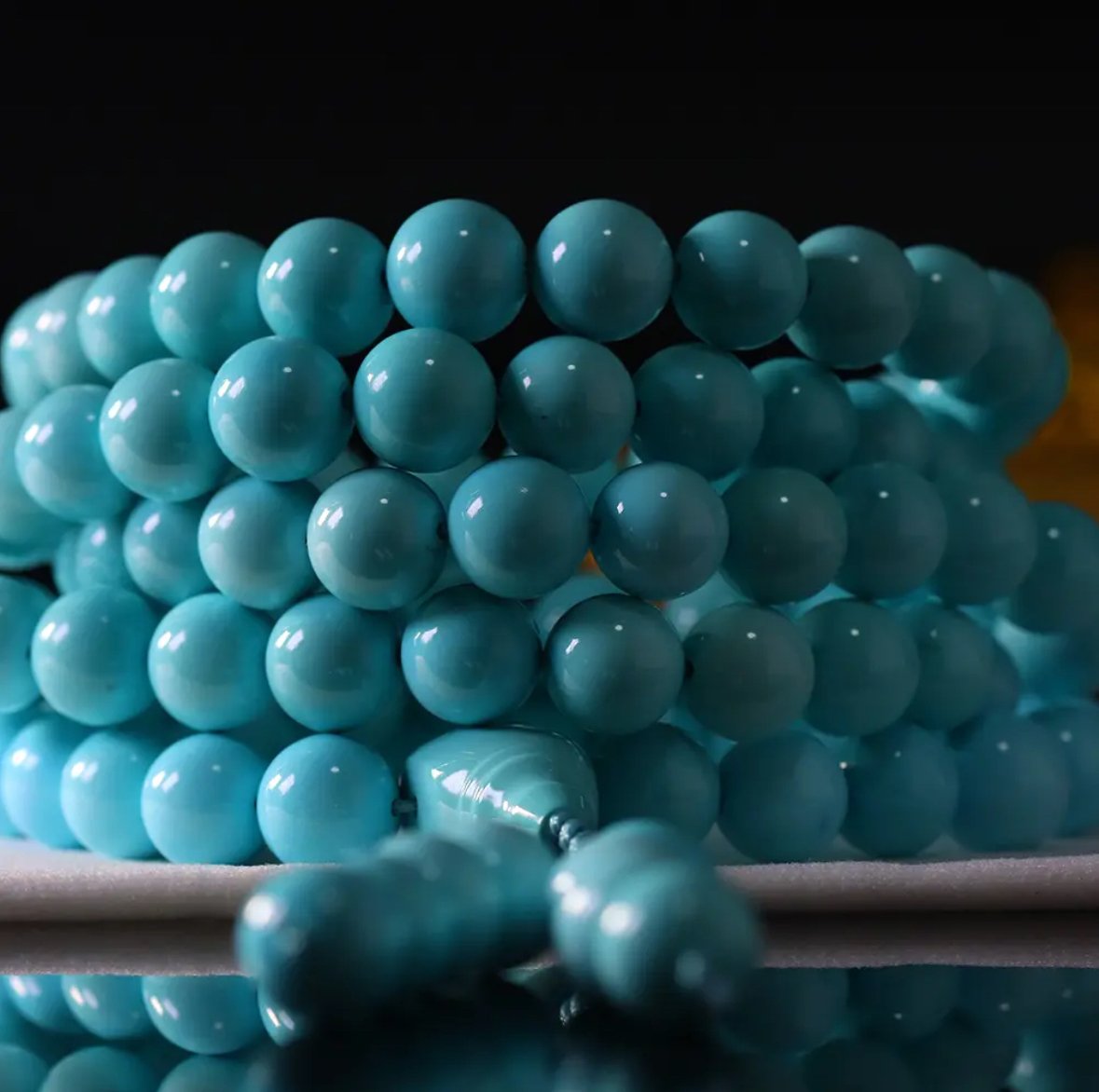In the realm of Native American jewelry, distinguishing between stabilized and natural turquoise is paramount. Often shrouded in confusion, this topic deserves a closer look to unravel the mystique surrounding these precious gemstones. For a profound exploration, we recommend delving into the works of Joe Dan Lowry, particularly "Turquoise Unearthed: An Illustrated Guide" and "Turquoise: The World Story of a Fascinating Gemstone."
When turquoise emerges from the depths of mines, it spans a spectrum defined by hardness, color vibrancy, and mine source. High-grade turquoise, characterized by its robustness and vivid hues, stands in stark contrast to the soft, chalky, and pale nature of low-grade counterparts. However, it's essential to note that the majority of mined turquoise falls into the low-grade category, necessitating treatment for jewelry purposes.

Stabilized Turquoise: A Metamorphosis Process
Defining Stabilized Turquoise: Stabilized turquoise undergoes a transformative process aimed at enhancing its hardness and color. Subjected to pressure, the stone absorbs a clear epoxy or plastic filler, resulting in a durable gemstone suitable for crafting exquisite jewelry. This innovative stabilization method traces its roots back to Arizona in the 1950s.
Diverse Altered Turquoise: Unveiling Distinctions
- Stabilized or Enhanced: Through pressure and epoxy, a harder stone emerges, often with optional color enhancement.
- Reconstituted or Chalk: Turquoise fragments crushed and mixed with epoxy yield blocks, not recommended for jewelry.
- Block or Imitation: Synthetic materials or manipulated stones imitating turquoise without containing actual turquoise.
Natural vs. Stabilized Turquoise: Price Dynamics Unveiled
Natural turquoise, distinguished by its rarity and quality, commands higher prices. Stabilization, a necessary process for lower-grade turquoise, impacts its market value. Transparency becomes pivotal in pricing, with natural turquoise generally carrying a higher price tag.

Buying Stabilized Turquoise: An Informed Affair
While the inherent value of natural turquoise prevails due to its rarity, opting for stabilized turquoise is acceptable if priced accordingly. Honesty in disclosing the stone's condition and quality is crucial, emphasizing the need to source from informed and reputable vendors.
Deciphering Price Differences: Factors at Play
Hardness, appearance, and rarity collectively influence natural turquoise prices. The coveted "gem-grade" turquoise, known for its hardness, stands atop the value hierarchy. Personal preferences shape the perception of appearance, with darker color and a tight matrix deemed desirable. Rarity, considering a mine's production history and turquoise availability, further contributes to pricing dynamics.
Major American Turquoise Mines:
- Bisbee
- Blue Diamond
- Kingman
- Sleeping Beauty
Popular Non-American Turquoise:
- Golden Hills
- Egyptian
- Persian
- Chinese
Embark on your turquoise journey, armed with knowledge and a profound understanding of the diverse facets that make this gemstone an enduring symbol of beauty and rarity.
Your FAQs Answered
Turquoise, with its enchanting allure, often leaves enthusiasts with questions about its value, rarity, and authenticity. Let's dive into the frequently asked questions to unravel the mysteries of this captivating gemstone.
What Is the Rarest Turquoise? The Lander Blue Spiderweb Turquoise holds the title of the rarest and most sought-after turquoise.
How Much Is Turquoise Worth per Gram? The value of turquoise varies widely. On average, standard-quality turquoise cabochons are priced between three to five dollars per carat, translating to $15 to $25 per gram. However, the landscape changes for rarer varieties like Lander Blue Spider Web, fetching a significantly higher price of $300 per carat or $1,500 per gram.
How Can You Determine If Turquoise Is Real? Turquoise possesses a characteristic softness, distinguishing it from imitations like howlite, which is notably softer. If the stone scratches easily, it may indicate howlite. To ensure authenticity, consider purchasing turquoise with a certification of authenticity.

